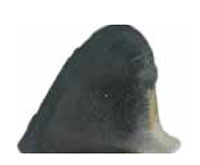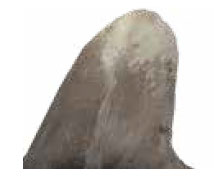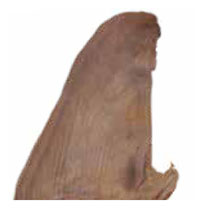CITES 2013: Fins at a Glance
Pew developed a guide to help users rapidly identify dried shark fins in international trade. A copy of the full guide can be found at www.SharkFinID.org.
This guide is intended to help enforcement and customs personnel in the provisional identification of the first dorsal fins of these shark species. In law enforcement situations, this could provide probable cause to hold questionable fins, so that expert opinion could be sought or genetic tests could be conducted to confirm the field identification.
Porbeagle Dorsal Fin |
Oceanic Whitetip Dorsal Fin |
Scalloped Hammerhead Dorsal Fin |
Porbeagle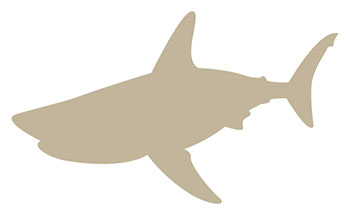
Species name: Lamna nasus
The warm-blooded porbeagle shark, caught mostly for its fins for soup and its meat, is distributed throughout the temperate North Atlantic Ocean and Southern Hemisphere.
First Dorsal Fin: Dark blue/black to dark greyish brown, rounded apex with white patch on lower trailing edge onto free rear tip.
IUCN Red List Designation
- Critically Endangered in the Mediterranean Sea and northeast Atlantic.
- Endangered in northwest Pacific.
- Vulnerable globally.
Species Facts
- The international demand for porbeagle fins and meat has driven populations to very low levels across their range. Studies show declines of up to 90 per cent in places around the world, including the northwest Atlantic.
- Almost no international conservation or management measures exist for this species on the high seas.
Oceanic Whitetip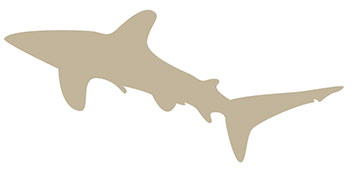
Species name: Carcharhinus longimanus
The oceanic whitetip is one of the most widespread shark species, found throughout the world's tropical and temperate seas. It is also one of the most threatened. It is typically caught for its valuable fins, which are used in soup.
First Dorsal Fin: Large and broadly rounded (paddlelike); mottled white at apex.
IUCN Red List Designation
- Critically Endangered in the northwest and west-central Atlantic.
- Vulnerable globally.
Species Facts
- Studies have documented population declines of up to 99 per cent, including in the Gulf of Mexico.
- Fins are easy to identify in global trade by the white at their tips, rounded shape and large size, making them one of the most distinctive products on the market.
- Scientists have estimated that 250,000 to 1.3 million oceanic whitetips are killed annually for the fin trade.
Scalloped Hammerhead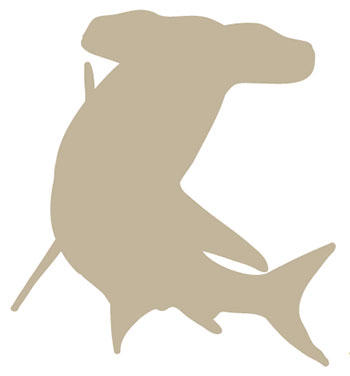
Species name: Sphyrna lewini
The scalloped hammerhead, with its distinctive head, is one of the most recognizable sharks. It is also one of the most endangered shark species, caught for its valuable fins to make soup.
First Dorsal Fin: Tall, straight, uniform in color; same for look-alike species: the great and smooth hammerheads.
IUCN Red List Designation
- Endangered globally.
Species Facts
- Hammerhead shark fins are some of the most valuable on the market.
- Surveys in the northwest Atlantic document the hammerhead loss at up to 98 per cent, landings in the southwest Atlantic show declines of up to 90 per cent, and declines of more than 99 per cent have occurred in the Mediterranean. The three hammerhead species (Sphyrna lewini, S. mokarran, S. zygaena) combined make up approximately 6 per cent of the identified fins entering the Hong Kong market. From this information, scientists have estimated that 1.3 million to 2.7 million scalloped and smooth hammerheads are killed for the fin trade annually.
